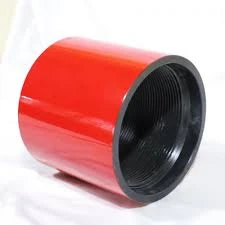Aluminum Pipe Joint Connectors and Fittings for Efficient Fluid Transfer
Understanding Aluminum Pipe Couplings and Fittings
Aluminum pipe couplings and fittings play a crucial role in various industries, including construction, plumbing, and manufacturing. These components allow for secure and efficient connections between pipes, ensuring a reliable flow of liquids and gases. This article delves into the benefits, applications, and types of aluminum pipe couplings and fittings, highlighting their significance in modern engineering.
Benefits of Aluminum Pipe Couplings and Fittings
1. Corrosion Resistance One of the standout features of aluminum is its resistance to corrosion. Unlike steel or iron, which can rust when exposed to moisture, aluminum forms a protective oxide layer that safeguards it from the elements. This characteristic makes aluminum fittings ideal for applications in marine environments, chemical processing, and other corrosive settings.
2. Lightweight Aluminum is significantly lighter than many other metals, such as steel. This lightweight nature not only makes manufacturing and handling easier but also reduces overall transportation costs. In scenarios where weight plays a critical role, such as in aerospace or automotive applications, aluminum fittings provide a distinct advantage.
3. Strength-to-Weight Ratio Despite its light weight, aluminum exhibits a high strength-to-weight ratio. This means that aluminum fittings can withstand considerable stress and pressure, making them suitable for high-pressure applications. Structural integrity is vital in plumbing and industrial processes, and aluminum couplings deliver reliability without added weight.
4. Cost-Effectiveness Although initial costs may vary, the overall lifecycle cost of aluminum pipe fittings tends to be lower than that of other materials. Their durability and resistance to wear and tear lead to fewer replacements and repairs, yielding long-term savings.
Applications of Aluminum Pipe Couplings and Fittings
Aluminum pipe couplings and fittings find extensive use across multiple industries
- Construction In building applications, aluminum fittings are used to connect pipes for plumbing and drainage systems. Their lightweight and corrosion-resistant properties are essential for ensuring reliable infrastructure.
- Hydraulics and Pneumatics In hydraulic and pneumatic systems, aluminum fittings are prevalent due to their ability to withstand high pressures and their compatibility with various fluids. These applications are vital in automotive and industrial machinery.
aluminum pipe couplings and fittings

- Chemical Processing The non-reactive nature of aluminum makes it a popular choice for transporting chemical substances safely. Aluminum couplings and fittings can handle various aggressive chemicals, ensuring safety and integrity.
- Aerospace In the aerospace sector, where weight reduction is critical, aluminum fittings are integral components of fuel and hydraulic lines. Their strength and lightweight properties ensure optimal performance in demanding conditions.
Types of Aluminum Pipe Couplings and Fittings
Various types of aluminum pipe couplings and fittings are available to suit different needs
1. Couplings Connect two lengths of pipe. They can be threaded or slip-on, allowing for flexible installation in various configurations.
2. Elbows Used to change the direction of the pipe. Common angles include 45 and 90 degrees, which facilitate bends in piping systems without adding unnecessary lengths.
3. Tees Allow for branching off from a main pipe. These fittings enable the distribution of fluids to multiple destinations.
4. Adapters Convert between different sizes or types of fittings. This versatility is crucial in systems with varying connections and requirements.
5. Caps and Plugs Used to close the ends of pipes, preventing leaks and contamination. These fittings ensure that systems can be securely sealed when not in use.
Conclusion
In summary, aluminum pipe couplings and fittings are indispensable components in modern industry, combining strength, lightweight characteristics, and corrosion resistance. Their versatility allows them to be used in a myriad of applications, from construction to aerospace. With continuous advancements in manufacturing and engineering, the demand for high-quality aluminum fittings is likely to grow, underscoring their importance in creating efficient and reliable fluid transfer systems. Understanding the properties and applications of these fittings can guide engineers and contractors in making informed decisions for their projects.
-
Tubing Crossover - API Compatible, Custom Sizes, In StockNewsNov.10,2025
-
Tubing Coupling | High-Strength, Leak-Proof Steel CouplingsNewsNov.10,2025
-
Wholesale API Threading Casing Coupling | API 5CT, Fast ShipNewsNov.10,2025
-
Pup Joint Supplier | API Certified, Custom, Quick ShipNewsNov.10,2025
-
Pup Joint Manufacturers | Precision Machined, Fast DeliveryNewsNov.10,2025
-
Tubing Coupling | Precision Steel, Leak-Proof, Fast DeliveryNewsNov.03,2025







